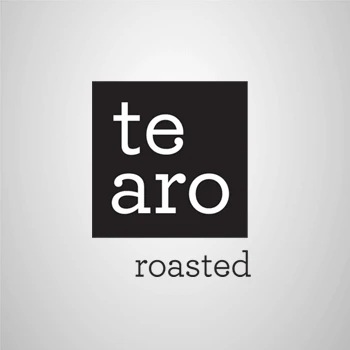What exactly is brand identity design and why is it foundational for our organization?
Brand identity design strategically develops an authentic visual mark that conveys your organization's personality, character, purpose, and values through a single cohesive system. Your brand identity becomes the foundational piece that other brand expressions build upon. Using our Experience Thinking framework, we ensure your identity works seamlessly across brand, content, product, and service experiences. Brand identity goes beyond just a logo - it includes naming, visual symbols, colors, typography, and the overall system that creates recognition and consistency.
Tip: Think of brand identity as the visual DNA of your organization - every touchpoint should reflect the same core personality and values consistently.
How does brand identity design fit into the overall brand development process?
Brand identity design follows brand strategy development and comes after establishing your brand persona, positioning, promise, and value proposition. Identity design transforms strategic requirements into tangible visual expressions that communicate your brand's essence. The identity then becomes the foundation for developing brand patterns, applications, and the broader brand system. This sequence ensures your visual identity authentically represents your strategic positioning rather than being arbitrary creative choices.
Tip: Ensure your brand strategy is solid and approved before beginning identity design - changing strategy mid-design creates costly revisions and weaker final results.
What makes a brand identity distinctive, memorable, and timeless?
Distinctive brand identities stand out from competitors through unique visual approaches that reflect authentic organizational characteristics. Memorable identities use simple, clear visual elements that create immediate recognition and positive associations. Timeless identities avoid trendy elements that quickly become dated, instead focusing on enduring design principles and organizational truths. The goal is creating identity systems that remain relevant and powerful over many years while allowing for appropriate evolution.
Tip: Test your identity concepts for distinctiveness by placing them alongside competitor identities - your brand should be immediately recognizable and different.
How does brand identity convey personality, character, and values through visual design?
Brand personality emerges through careful choices in typography, color, imagery style, layout approach, and overall visual treatment. Character shows through the consistent application of design principles that reflect organizational values and culture. Visual elements work together to create emotional responses and associations that align with your brand strategy. Every design decision - from typeface selection to color palette - should reinforce the intended brand personality traits and organizational characteristics.
Tip: Create mood boards that capture your intended brand personality before designing specific identity elements - this visual reference guides all design decisions.
Why is brand identity considered foundational for other experience design?
Brand identity provides the visual and emotional foundation that guides content, product, and service experience design. Using our Experience Thinking approach, brand identity ensures consistency across all customer touchpoints and interactions. Identity elements inform content design, product interface development, and service environment creation. Without solid brand identity, other experiences lack cohesive direction and may create disconnected or confusing customer journeys.
Tip: Design your brand identity with future applications in mind - consider how identity elements will work across digital interfaces, physical environments, and service interactions.
What business problems does effective brand identity design solve?
Effective brand identity solves problems including lack of market differentiation, inconsistent brand application, unclear organizational positioning, and weak customer recognition. Good identity design creates immediate visual recognition, communicates value propositions clearly, and provides frameworks for consistent brand application across all touchpoints. Identity design also helps internal stakeholders understand and communicate brand positioning more effectively.
Tip: Document specific brand recognition and consistency challenges your organization faces currently - these problems should directly inform identity design objectives and success measures.
How do you balance creativity with strategic business objectives in identity design?
Balancing creativity with strategy requires understanding that effective identity design serves business goals while expressing organizational personality authentically. Creative solutions should emerge from strategic requirements rather than arbitrary aesthetic preferences. We use brand strategy as creative constraints that guide design decisions and ensure business relevance. The most successful identities are both strategically sound and creatively distinctive within their strategic parameters.
Tip: Use your brand strategy as a creative brief rather than a limitation - clear strategic direction often leads to more innovative and effective creative solutions.
What are the core elements that make up a complete brand identity?
Complete brand identity includes naming, logo design, tagline development, typography systems, color palettes, and visual style guidelines. The logo often includes multiple aspects: company name, visual symbol, and color applications. These elements work together as a cohesive system rather than independent pieces. The identity should be flexible enough to work across different applications while maintaining consistent recognition and brand expression.
Tip: Design identity elements that work well both independently and in combination - sometimes you'll use the full logo, other times just the symbol or wordmark.
How do you approach brand naming as part of identity development?
Brand naming begins with workshops involving brand strategy, competitive analysis, and stakeholder input to generate initial ideas. We then reduce the creative process to focused exploration that fits your brand strategy requirements. Naming approaches include descriptive names, acronyms, made-up words, or alternative spellings that create unique positioning. The naming process includes testing candidates for stickiness, expression, uniqueness, and strategic alignment before final selection.
Tip: Keep decision-making groups small for naming - too many opinions often lead to compromise solutions that satisfy no one completely.
What makes logo design effective for brand recognition and communication?
Effective logos balance visual impact with functional versatility across different applications and sizes. Good logo design strives to be distinctive, memorable, and timeless while reflecting brand strategy and business objectives. Logos should work in multiple formats including full color, single color, reversed applications, and very small sizes. The design process considers how logos will appear on everything from business cards to building signage to digital interfaces.
Tip: Test logo designs at very small sizes and in single-color applications early in the design process - these constraints often reveal design issues that aren't apparent in large, full-color presentations.
How do you develop taglines that resonate with target audiences?
Tagline development focuses on presenting key benefits in memorable, simple language that aligns with brand personality and positioning. Taglines should be brief, memorable, and clearly communicate value propositions or differentiators. Unlike names and logos, taglines may evolve more frequently to reflect changing business focus or market positioning. We often test taglines with target audiences to ensure they resonate and effectively communicate intended messages.
Tip: Create taglines that work both independently and in combination with your logo - they should enhance rather than compete with other identity elements.
What role does color psychology play in brand identity development?
Color psychology influences emotional responses and brand associations, but color selection should be based on strategic positioning rather than generic color meanings. Different cultures and industries may have varying color associations that affect perception. Color systems should include primary brand colors, secondary palettes, and functional colors for different applications. Color choices must also consider practical reproduction across digital screens, print materials, and environmental applications.
Tip: Consider how your color palette will reproduce across different media and lighting conditions - colors can appear dramatically different in various environments.
How do you ensure brand identity works across different cultural contexts?
Cross-cultural identity design requires understanding color symbolism, visual communication preferences, and cultural values that vary across regions. We research cultural considerations that may affect identity perception and reception in different markets. Identity development may include variations or adaptations for specific cultural contexts while maintaining core brand recognition. The goal is creating identities that respect cultural sensitivities while maintaining brand consistency.
Tip: Research cultural implications of color, imagery, and symbolism choices if your brand will operate in diverse cultural markets - what works in one culture may be problematic in another.
What technical considerations affect brand identity design decisions?
Technical considerations include scalability across different sizes, reproduction quality across various media, file format requirements, and digital optimization needs. Identity designs must work effectively in digital interfaces, print materials, environmental applications, and merchandise. We consider factors like minimum size requirements, color reproduction limitations, and animation possibilities for digital applications. Technical planning prevents identity designs that look good in presentations but fail in real-world applications.
Tip: Plan for the smallest and most challenging applications first - if your identity works on a business card and mobile app icon, it will likely work well in larger applications too.
What does the brand identity design process look like from concept to completion?
Our identity design process begins with brand concept development that responds to your positioning, promise, persona, and value proposition. We create inspiration boards, explore tone of voice, and develop key messaging before moving into identity development. The process includes naming exploration, logo design, tagline development, and system creation. Throughout the process, we test concepts with stakeholders and target audiences to ensure strategic alignment and market resonance.
Tip: Plan adequate time for the iterative nature of identity design - rushing the creative process often results in weaker solutions that miss strategic opportunities.
How do you generate and explore multiple identity directions?
Identity exploration begins with divergent thinking that generates multiple creative approaches based on brand strategy requirements. We explore different naming directions, visual styles, personality expressions, and application approaches. The exploration process balances strategic requirements with creative innovation to find unique solutions. We then converge toward the strongest directions through stakeholder feedback, strategic evaluation, and practical assessment.
Tip: Resist settling on the first design direction that looks good - exploring multiple approaches often reveals stronger solutions and prevents regret later in the process.
What role do inspiration boards play in identity development?
Inspiration boards are collages of images, materials, colors, and photos that capture intended brand emotions and personality direction. These boards communicate design direction in tangible ways that stakeholders can react to and discuss. Inspiration boards help align stakeholder expectations and provide creative direction for detailed identity development. They serve as reference points throughout the design process to ensure consistency with intended brand personality.
Tip: Use inspiration boards to facilitate stakeholder discussions about brand personality and visual direction before investing time in detailed identity design work.
How do you handle stakeholder input and feedback during identity design?
Stakeholder input requires structured collection and evaluation processes that balance diverse perspectives with design integrity. We facilitate feedback sessions that focus on strategic alignment rather than personal aesthetic preferences. Clear presentation of design rationale helps stakeholders understand creative decisions and their connection to business objectives. We incorporate valuable feedback while maintaining design coherence and strategic direction.
Tip: Educate stakeholders about providing feedback based on strategic criteria rather than personal preferences - this leads to more productive discussions and better design decisions.
What design research informs identity development decisions?
Design research includes competitive analysis, industry convention studies, cultural context research, and technical requirement assessment. We examine how competitors use visual identity, what conventions exist in your industry, and where opportunities exist for differentiation. Research also includes understanding technical constraints, cultural considerations, and application requirements that will affect identity effectiveness across different contexts.
Tip: Study both direct competitors and aspirational brands from other industries to identify unique positioning opportunities that your competitors may have missed.
How do you balance industry conventions with creative differentiation?
Industry conventions provide context for audience expectations while differentiation creates memorable brand positioning. We analyze industry visual patterns to understand what audiences expect versus where opportunities exist for distinctive approaches. The goal is being appropriately recognizable within your industry while standing out memorably. Sometimes following conventions in some areas enables bold differentiation in others.
Tip: Map industry visual conventions systematically to identify specific areas where differentiation will have the most impact on brand recognition and recall.
What makes identity concepts ready for client presentation and decision-making?
Ready identity concepts include sufficient development to communicate design direction while remaining flexible for refinement. Concepts should show identity elements in multiple applications to demonstrate versatility and practical functionality. Presentation materials should clearly explain design rationale and connection to brand strategy. Concepts need enough detail for informed decision-making without being so finished that changes become difficult or expensive.
Tip: Present identity concepts with consistent levels of development across options to ensure fair comparison - avoid showing highly polished concepts alongside rough sketches.
How do you plan brand identity implementation across different touchpoints?
Implementation planning begins by identifying all current and planned brand touchpoints where identity will appear. This includes digital applications, print materials, environmental signage, merchandise, and service interactions. We prioritize implementation based on business impact, visibility, and timeline requirements. Planning also addresses technical specifications, production requirements, and stakeholder coordination needed for successful rollout across all applications.
Tip: Create an implementation priority matrix that considers both business impact and complexity to sequence rollout effectively and manage resources efficiently.
What timeline should we expect from identity design to full implementation?
Identity development typically requires 8-12 weeks from initial concept through final approval, depending on complexity and stakeholder involvement. Implementation planning adds 2-4 weeks for specification development and rollout preparation. Full implementation can take 3-6 months depending on the scope of applications and organizational coordination requirements. Complex organizations or extensive application needs may require longer implementation periods.
Tip: Plan implementation timeline with buffer periods for unexpected challenges and coordinate with other organizational initiatives that may affect brand rollout timing.
How do you ensure brand identity maintains consistency during implementation?
Consistency requires detailed specification documentation, stakeholder training, and quality control processes during implementation. We create brand guidelines that provide specific usage instructions, technical specifications, and examples for common applications. Implementation includes stakeholder education about proper identity usage and approval processes for new applications. Monitoring systems help identify inconsistencies early and provide corrective guidance.
Tip: Invest in thorough documentation and stakeholder training upfront - preventing inconsistencies is much easier than correcting them after implementation.
What brand guidelines and documentation support successful identity implementation?
Brand guidelines include logo usage specifications, color systems, typography guidelines, application examples, and usage restrictions. Documentation should provide clear instructions for common scenarios while establishing principles for new applications. Guidelines often include technical specifications, file formats, and production requirements. Good documentation serves both as reference material and training resource for stakeholders implementing the identity.
Tip: Create guidelines that answer practical questions stakeholders will face during implementation rather than just showing what the identity looks like in ideal conditions.
How do you coordinate identity implementation with existing brand materials and systems?
Coordination requires auditing existing brand materials, planning transition strategies, and managing overlapping usage periods. We identify which materials need immediate replacement versus which can transition gradually. Implementation planning addresses budget allocation, production scheduling, and stakeholder communication about changes. The goal is smooth transition that maintains brand consistency while managing practical constraints.
Tip: Create a phase-out schedule for existing brand materials based on replacement costs and business impact rather than trying to replace everything simultaneously.
What role does AI play in brand identity design and implementation processes?
AI enhances brand identity design through automated competitive analysis, pattern recognition in successful identity systems, and rapid concept variation generation. AI tools can analyze market trends, generate initial design explorations, and optimize identity applications for different contexts. AI also supports implementation through automated brand compliance checking and application optimization. However, strategic thinking, creative direction, and emotional resonance require human insight and decision-making.
Tip: Use AI tools to augment human creativity and analysis rather than replace strategic thinking - AI excels at pattern recognition and optimization but human judgment remains essential for brand strategy and emotional connection.
How do you manage costs and resources during identity implementation?
Cost management requires prioritizing implementation based on business impact and stakeholder needs. We help organizations understand where identity investments will have the most effect and plan budgets accordingly. Resource management includes coordinating internal capabilities with external requirements and planning implementation sequences that optimize resource usage. Cost planning addresses both immediate implementation and ongoing maintenance requirements.
Tip: Allocate budget for both expected implementation costs and unexpected applications that emerge during rollout - flexibility in resource planning prevents implementation delays.
How do you test brand identity effectiveness before full implementation?
Identity testing examines distinctiveness, memorability, visceral response, and first impressions using focus groups, surveys, and interviews. We test identity elements in realistic application contexts to understand how they perform in actual usage scenarios. Testing includes both target audience research and stakeholder feedback to ensure identities work for all relevant groups. Research provides insights for refinement before major implementation investments.
Tip: Test identity designs in the contexts where your audience will actually encounter them rather than just presenting isolated logo designs in perfect conditions.
What specific aspects of brand identity should be tested with target audiences?
Testing should examine brand personality perception, competitive differentiation, message comprehension, emotional response, and recall effectiveness. We test whether identities communicate intended brand characteristics and positioning. Testing also evaluates practical recognition across different applications and contexts. Research reveals whether intended brand strategy translates effectively through visual identity elements.
Tip: Test both immediate recognition and delayed recall to understand how well your identity creates lasting brand associations and memorability.
How do you handle testing results that contradict internal preferences?
Contradictory testing results require careful analysis of underlying causes and strategic implications. We examine whether issues stem from design execution, strategic positioning, or audience understanding. Sometimes negative feedback reveals important market insights that improve final identity effectiveness. Our role includes helping stakeholders understand testing results and make informed decisions about modifications or implementation approaches.
Tip: Use contradictory feedback as learning opportunities to understand audience perspectives and refine identity approaches rather than dismissing results that don't match preferences.
What testing methods provide the most valuable identity design insights?
Most valuable testing combines qualitative insights from focus groups and interviews with quantitative measures from surveys and preference testing. Qualitative research reveals emotional responses and deeper associations while quantitative research provides statistical validation across larger sample sizes. Testing methods should match your specific research questions and business objectives for identity development.
Tip: Use mixed research methods to get both statistical confidence and deep understanding of why people respond to identity designs in specific ways.
How do you test brand identity across different demographic segments?
Demographic testing requires understanding how different audience segments may respond differently to identity elements. We examine responses across age groups, cultural backgrounds, industry familiarity, and other relevant segmentation criteria. Testing reveals whether identity designs work broadly or need customization for specific segments. Analysis helps identify which identity elements have universal appeal versus which may need adaptation.
Tip: Prioritize testing with your most important customer segments but include diverse perspectives to understand broader market reactions and potential issues.
What validation processes ensure identity designs meet strategic objectives?
Strategic validation examines how well identity designs support business objectives, brand positioning, and competitive differentiation goals. We evaluate whether designs communicate intended messages, resonate with target audiences, and provide sustainable competitive advantages. Validation includes both market research and strategic assessment against original brand strategy requirements. The process ensures creative solutions serve business purposes effectively.
Tip: Create specific success criteria based on your brand strategy before testing begins so you can evaluate results against clear, objective measures rather than subjective preferences.
How do you incorporate testing insights into final identity refinement?
Testing insights inform specific design adjustments while maintaining overall strategic direction and creative integrity. We analyze which testing feedback addresses strategic issues versus preferences and prioritize changes accordingly. Refinement focuses on improving identity effectiveness rather than trying to satisfy every piece of feedback. The goal is creating identities that test well while maintaining distinctive creative approaches.
Tip: Focus refinements on testing insights that improve strategic alignment and audience effectiveness rather than trying to incorporate every suggestion from research participants.
How do you establish governance for brand identity usage and application?
Brand governance requires clear roles, responsibilities, and approval processes for identity usage across the organization. We help establish decision-making authority, review procedures, and quality standards for new identity applications. Governance structures balance consistency requirements with operational efficiency and stakeholder needs. Good governance enables appropriate identity evolution while preventing unauthorized modifications that damage brand equity.
Tip: Assign specific individuals to governance roles with clear decision-making authority rather than relying on committee-based approval processes that slow implementation.
What ongoing support does brand identity require after initial implementation?
Ongoing support includes application guidance, compliance monitoring, stakeholder training, and identity evolution planning. Organizations need resources for creating new identity applications, addressing usage questions, and maintaining consistency standards. Support also involves monitoring identity usage across different contexts and providing corrective guidance when issues arise. Long-term success requires dedicated attention to identity management.
Tip: Plan for ongoing identity management resources from the beginning rather than assuming initial implementation will handle all future needs without additional support.
How do you handle brand identity evolution and updates over time?
Identity evolution requires balancing equity preservation with contemporary relevance and changing business needs. We establish principles for when changes are appropriate versus when consistency should be maintained. Evolution planning includes stakeholder consultation, market testing, and implementation coordination. The goal is keeping identities current and effective while protecting valuable brand recognition and associations.
Tip: Document the strategic reasoning behind original identity decisions so future evolution can build on strengths while addressing specific business changes or market developments.
What monitoring systems help maintain brand identity consistency?
Monitoring systems include both proactive review processes during application creation and reactive compliance checking of implemented materials. We help establish review checkpoints, quality standards, and correction procedures. Monitoring focuses on high-impact applications and common usage scenarios where consistency matters most. Technology can support monitoring through automated compliance checking where appropriate.
Tip: Focus monitoring efforts on applications with the highest visibility and business impact rather than trying to review every identity usage equally - prioritize your oversight resources.
How do you manage brand identity across multiple products or business units?
Multi-product identity management requires understanding brand architecture and the relationships between different offerings. We help establish consistent application principles while allowing appropriate differentiation for different products or markets. Management includes coordination between business units, shared resource development, and consistency monitoring across the organization. The goal is leveraging brand equity while serving diverse business needs.
Tip: Establish clear brand architecture principles early that define how identity elements work across different products to prevent inconsistent interpretations later.
What legal and intellectual property considerations affect brand identity management?
Legal considerations include trademark registration, usage rights, protection strategies, and compliance requirements. We help coordinate with legal counsel to ensure identity elements can be protected and enforced appropriately. IP management includes usage guidelines for internal stakeholders and external partners. Legal planning also addresses international protection needs and potential conflict resolution procedures.
Tip: Involve legal counsel early in identity development to address trademark availability and protection strategies before investing heavily in specific design directions.
How do you measure brand identity effectiveness and return on investment?
Identity effectiveness measurement includes brand recognition studies, perception tracking, competitive positioning analysis, and business impact assessment. We help establish baseline measurements before identity implementation and track changes in brand metrics over time. ROI measurement examines both direct costs and business benefits including improved recognition, market positioning, and operational efficiency gains.
Tip: Establish measurement baselines before implementing new identity so you can accurately assess the impact of changes rather than guessing about improvement levels.
What does the brand identity design process look like when working with Akendi?
Our brand identity design process begins with strategic foundation review using our Experience Thinking framework. We ensure identity development connects seamlessly with your brand, content, product, and service experiences. The process includes concept exploration, stakeholder collaboration, iterative design development, testing coordination, and implementation planning. We maintain regular communication while bringing specialized identity design expertise to create authentic, strategic solutions.
Tip: Prepare for initial meetings by gathering existing brand materials, competitor references, and examples of identity designs you find compelling or concerning for discussion.
How do you integrate with our internal brand and marketing efforts?
Integration requires understanding your brand strategy, organizational culture, stakeholder dynamics, and existing brand management processes. We work collaboratively with your brand, marketing, and leadership personnel to ensure identity development enhances rather than disrupts ongoing efforts. Our role includes building internal capabilities while providing specialized design expertise and objective external perspective on identity effectiveness and market positioning.
Tip: Map out your internal brand decision-making process and identify key stakeholders who will need to approve identity directions before beginning design development.
What level of involvement is expected from our internal stakeholders?
Internal involvement includes strategic input, design feedback, testing participation, and implementation coordination. We provide structured frameworks for efficient collaboration while respecting busy schedules and decision-making hierarchies. Key stakeholders typically include brand leadership, marketing personnel, executive decision-makers, and representative end users. Our goal is maximizing internal expertise while minimizing disruption to daily operations.
Tip: Identify one primary point of contact who can coordinate internal feedback and make decisions efficiently rather than trying to manage multiple separate stakeholder relationships.
How do you handle complex organizational requirements and approval processes?
Complex requirements require understanding organizational culture, decision-making hierarchies, approval timelines, and political considerations that affect identity development success. We adapt our process to work within your specific organizational context while maintaining design quality and strategic effectiveness. This includes managing stakeholder expectations, coordinating approval sequences, and addressing organizational constraints that impact design decisions.
Tip: Be transparent about internal approval requirements and potential challenges early in the process so timeline and approach can be planned appropriately.
What ongoing support do you provide after brand identity completion?
Post-completion support includes implementation guidance, application development, stakeholder training, usage consultation, and evolution planning. We help coordinate identity rollout, address application questions, and provide guidance for maintaining consistency standards. Our relationship often extends beyond initial identity development as organizations benefit from expertise during implementation and ongoing brand management phases.
Tip: Plan for ongoing support needs during implementation and first year of usage rather than assuming identity completion addresses all future brand management requirements.
How do you ensure knowledge transfer and internal capability building?
Knowledge transfer includes documentation of design decisions, stakeholder training on identity principles, and guidance on brand management processes. We provide education on identity applications, usage standards, and evolution approaches. Our goal is building internal capabilities while remaining available for consultation on complex identity challenges and strategic evolution decisions.
Tip: Identify internal personnel who will be responsible for ongoing identity management and involve them actively in the design process for hands-on learning and ownership building.
What makes Akendi's approach to brand identity design distinctive?
Our Experience Thinking framework sets us apart by creating brand identities that support connected experiences across all customer touchpoints. We examine how identity elements work in brand communications, content applications, product interfaces, and service environments. With over 220 clients across technology, energy, media, and public sectors, we bring deep cross-industry experience to identity development. Our approach ensures identities become tools for creating meaningful customer experiences rather than just visual recognition systems.
Tip: Consider how your brand identity will support improved customer experiences across all touchpoints rather than just solving visual consistency or differentiation challenges.












